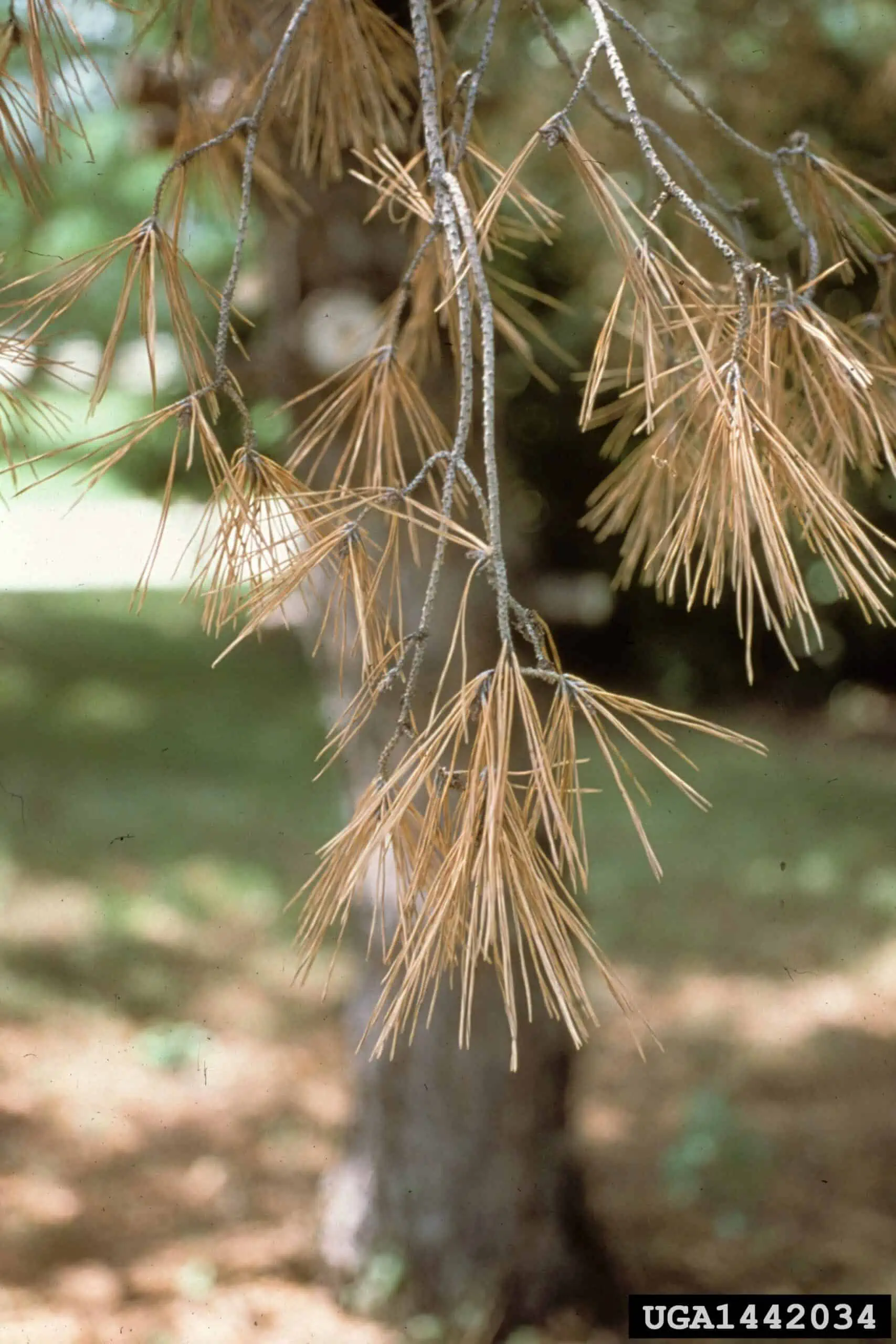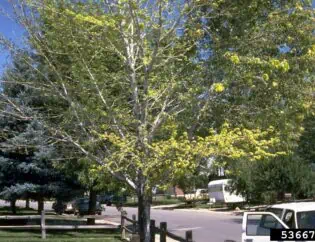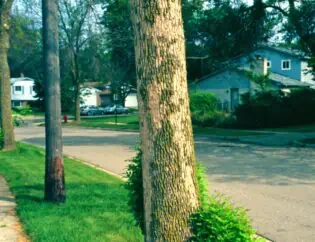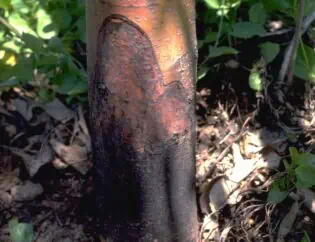
Pine wilt, primarily impacting non-native pines, has become a growing concern in residential and commercial landscapes. Recognizing the early signs of the disease, such as needle discoloration and decreased resin flow, is crucial for timely intervention. Progressive Tree Service’s expertise in PWD provides a critical resource for those responsible for tree care and maintenance.
Early Detection: Key to Prevention
Early detection of PWD is essential for its management. The tree disease generally affects mature trees, showing symptoms from mid-summer to winter. Homeowners and property managers need to inspect their pines regularly for signs of disease.
The initial symptoms of PWD can be subtle but worsen rapidly. Discoloration of needles, wilting, and eventual browning are telltale signs. Proactive monitoring of pine trees, especially during the vulnerable months, and consulting with tree care experts upon noticing these symptoms can significantly aid in preventing the spread of the disease.
Understanding the Pine Wilt Nematode and Its Vectors
The pinewood nematode, central to PWD, disrupts trees’ water and nutrient flow, leading to their rapid decline and death. It spreads through pine sawyer beetles, which carry the nematodes from tree to tree.
Understanding the life cycle of the pine sawyer beetle and the conditions that favor its proliferation is key to managing PWD. These beetles are most active during warm months and can infest multiple trees, making their control a critical component of managing the spread of PWD.
Maintaining Tree Health to Prevent Disease
Healthy pine trees are less susceptible to PWD. Proper tree care, such as adequate watering and reducing turf competition, is essential in preventing the disease.
In addition to regular watering and minimizing turf competition, other practices such as mulching, fertilizing, and pruning can also help maintain tree health. Strong, healthy trees are less likely to succumb to PWD, highlighting the importance of ongoing tree maintenance and care.
Preventive Measures: Insecticides and Abamectin
Abamectin is a key preventive measure against PWD. Biennial injections by certified arborists can significantly reduce the likelihood of disease in healthy trees.
The application of abamectin should be timed and executed with precision. The treatment’s effectiveness is contingent on several factors, including the tree’s health status, the local climate, and the beetle population. Proper application can greatly enhance the chances of preventing PWD.
The Necessity of Tree Removal for Infected Trees
Once a tree is infected with PWD, removal is the only solution. Prompt removal of infected trees is crucial in controlling the spread of the disease.
The process of tree removal should be thorough, ensuring that all parts of the infected tree are appropriately disposed of to prevent further spread. This includes the careful handling of tree debris, chips, and stumps, which can still harbor nematodes and beetles.
Choosing Resistant Species and Diverse Planting
In regions prone to PWD, selecting native resistant pine species and diversifying plantings can help mitigate the risk of widespread disease.
Diversity in tree species not only enhances the aesthetic value of landscapes but also serves as a strategic measure against the spread of diseases like PWD. By planting a mix of resistant native pines and other evergreens, the risk of losing a significant portion of the tree population to PWD is greatly reduced.
The Role Of Abamectin
Abamectin, an effective preventive treatment against PWD, plays a significant role in managing the disease:
- Inhibiting Pinewood Nematode Movement: Abamectin effectively inhibits over 80% of pinewood nematode movement, crucial in managing PWD in trees like Scots pine.
- Preventive Injections in Healthy Trees: Demonstrated to significantly increase survival rates in Scots pine trees exposed to pine wilt.
- Increased Survival Rates in Inoculated Trees: Shown to be effective in increasing survival rates of Scots pines artificially inoculated with pinewood nematodes.
- Cost Consideration for High-Value Trees: Best suited for high-value trees due to its cost.
In summary, abamectin’s role in controlling the spread of PWD lies in its ability to inhibit the movement and survival of the pinewood nematode, thereby increasing the survival rates of treated trees. However, it is ineffective once a tree
is infected, emphasizing the importance of early prevention rather than cure.
Integrated Pest Management for PWD
Integrated Pest Management (IPM) is an effective strategy to manage PWD. This approach includes:
- Monitoring: Regular inspection of pine trees for early signs of PWD.
- Cultural Practices: Enhancing tree health through proper watering, mulching, and pruning.
- Biological Control: Exploring natural predators or competitors of the pine sawyer beetle.
- Chemical Control: Judicious use of insecticides and nematicides like abamectin, especially in high-risk areas.
Implementing an IPM approach can significantly reduce the incidence of PWD, ensuring the long-term health of pine trees.
Environmental Factors Influencing PWD
Environmental conditions play a crucial role in the development and spread of PWD:
- Climate: Warmer temperatures can increase beetle activity, escalating the risk of PWD.
- Soil Conditions: Poor soil health can stress trees, making them more susceptible to diseases.
- Tree Density: High tree density can facilitate the rapid spread of PWD, highlighting the need for strategic planting.
Understanding and managing these environmental factors is key to preventing PWD in pine forests and landscapes.
Community Involvement in PWD Prevention
Community involvement is essential in preventing the spread of PWD. Homeowners, property managers, and local organizations can collaborate to implement effective PWD management strategies, including:
- Education and Awareness: Sharing knowledge about PWD signs, prevention, and management.
- Community Monitoring Programs: Organizing local monitoring efforts to detect PWD early.
- Collective Action: Coordinating tree removal and treatment efforts in affected areas.
Engaging the community in PWD management fosters a collective approach to preserving the health of local pine trees.
Effective management of PWD requires a collective effort from homeowners, property managers, arborists, and the community. By implementing integrated pest management strategies, adapting to environmental factors, and fostering community involvement, the impact of PWD can be significantly reduced. Progressive Tree Service remains committed to guiding and supporting these efforts, ensuring the health and longevity of pine trees in our landscapes.
For expert advice and assistance in managing Pine Wilt Disease, contact Progressive Tree Service. Our team of professionals is ready to help you safeguard your trees against this destructive disease.
USDA Forest Service – Region 2 – Rocky Mountain Region , USDA Forest Service, Bugwood.org
*we are not affiliated with bugwood.org


